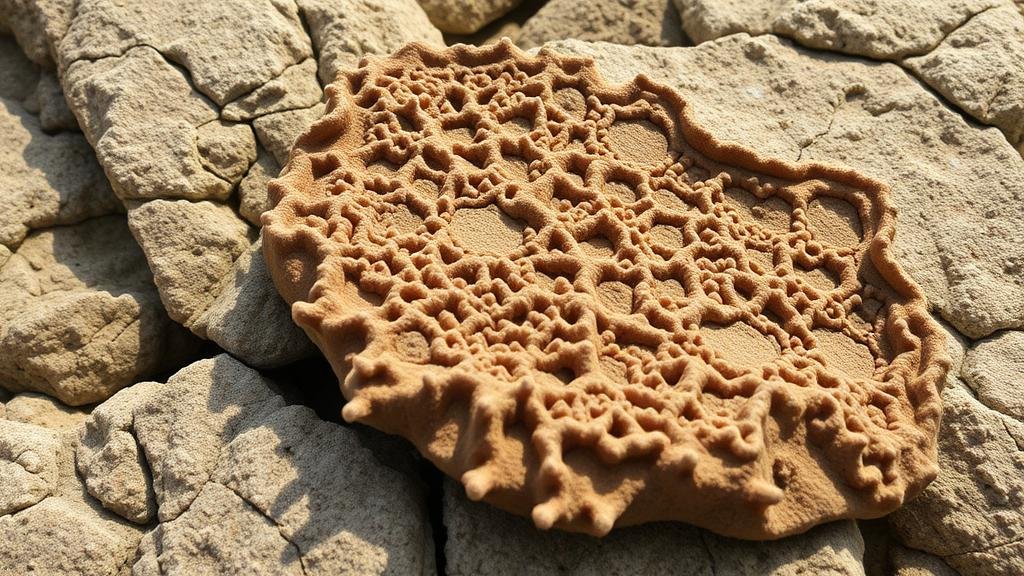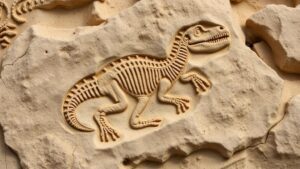Fossilized Coral Reefs: Exploring Marine Relics in Rocky Outcrops
Fossilized Coral Reefs: Exploring Marine Relics in Rocky Outcrops
Fossilized coral reefs serve as captivating remnants of ancient marine ecosystems, providing invaluable insights into the Earth’s geological and biological history. For rockhounds and mineral collectors, these fossils not only offer aesthetic appeal but also a tangible connection to the planets past. Understanding the formation, identification, and collection of fossilized coral reefs can enhance ones appreciation for these geological treasures.
The Science Behind Fossilized Coral Reefs
Coral reefs are primarily composed of living coral polyps, which produce calcium carbonate structures over time. When these polyps die, their hard structures can become fossilized through a series of geological processes. Fossilized coral can be dated back hundreds of millions of years, with some formations dating to the Ordovician period, approximately 485 million years ago.
The process of fossilization involves several key steps:
- Burial: Sediments cover living corals, protecting them from decay.
- Mineralization: Groundwater rich in minerals permeates through the sediments and replaces organic material with minerals like calcite.
- Solidification: Over millions of years, these processes create solid rock formations that retain the structure of the original coral.
Identifying Fossilized Coral
Identifying fossilized coral can be an engaging challenge for rockhounds. Here are some distinguishing features to look for:
- Patterns: Fossilized coral typically displays intricate patterns, reminiscent of honeycombs or flower-like structures.
- Color Variations: The hues can range from grey and brown to vibrant colors depending on the minerals present during fossilization.
- Textural Features: Fossils can exhibit varying textures; some may appear smooth, while others have rough or porous surfaces.
Geological Locations to Explore
Fossilized coral can be commonly found in various geological settings, particularly in sedimentary rock formations. Notable locations include:
- The Florida Keys: Known for diverse marine fossils, including coral from different geological periods.
- The Bahamas: Features ancient coral reefs, some fossilized in limestone formations.
- The Midwest U.S.: States like Ohio and Indiana have numerous quarries rich in fossil coral deposits.
Practical Tips for Collectors
For those eager to start or expand their fossil collection, consider these practical tips:
- Research Legalities: Before collecting, familiarize yourself with local laws regarding fossil collection; some places may require permits.
- Use Proper Tools: Bring a geological hammer, chisels, and safety goggles to safely extract fossils without damaging them.
- Join Local Clubs: Engaging with local rockhound clubs can provide invaluable knowledge, access to collecting sites, and opportunities for trade.
Real-World Applications of Fossilized Coral
Fossilized coral has applications beyond mere collection. In science and industry, these fossils play a role in:
- Paleoclimatology: Researchers study fossil corals to infer past climate conditions, using isotopic analysis to understand historical sea temperatures.
- Geology and Construction: Fossil corals can indicate the former presence of marine environments, aiding in oil exploration.
- Art and Decoration: Many mineral collectors turn fossilized corals into stunning jewelry or decorative pieces for homes.
Conclusion and Actionable Takeaways
Fossilized coral reefs represent a fascinating intersection of geology, biology, and history. For rockhounds and mineral collectors, they offer unique opportunities to explore and appreciate the complexities of our planets past. By understanding the formation processes, identifying characteristics, and knowing where to collect responsibly, enthusiasts can cultivate their fossil collection while contributing to the broader understanding of geological history.
In summary, dive into the world of fossilized coral reefs by:
- Researching local geology and fossil sites.
- Equipping yourself with the right tools and knowledge.
- Engaging with the rockhound community for shared experiences and tips.
Ultimately, the pursuit of fossilized coral not only enriches ones collection but also deepens the connection to the Earths rich marine heritage. Happy collecting!



